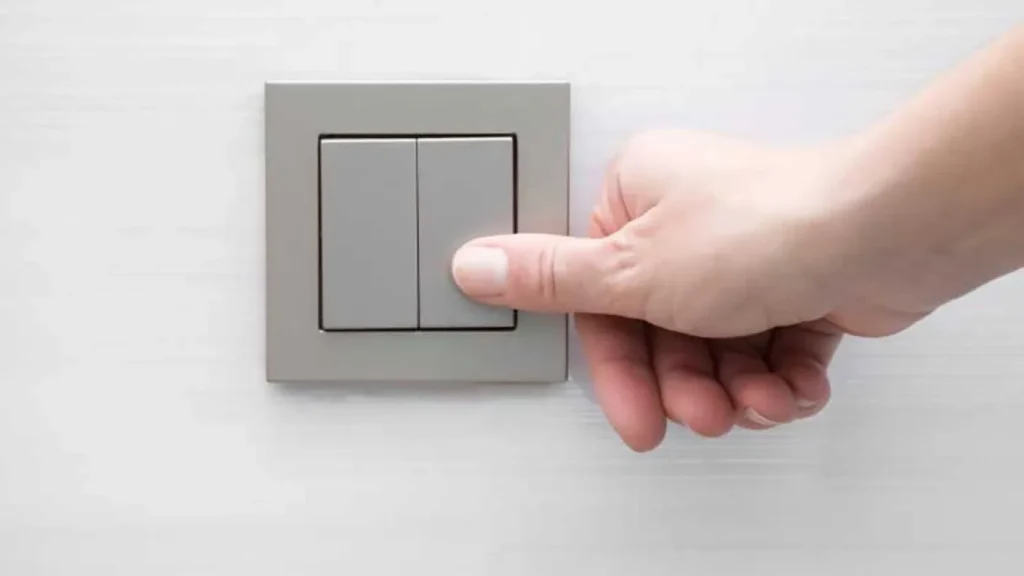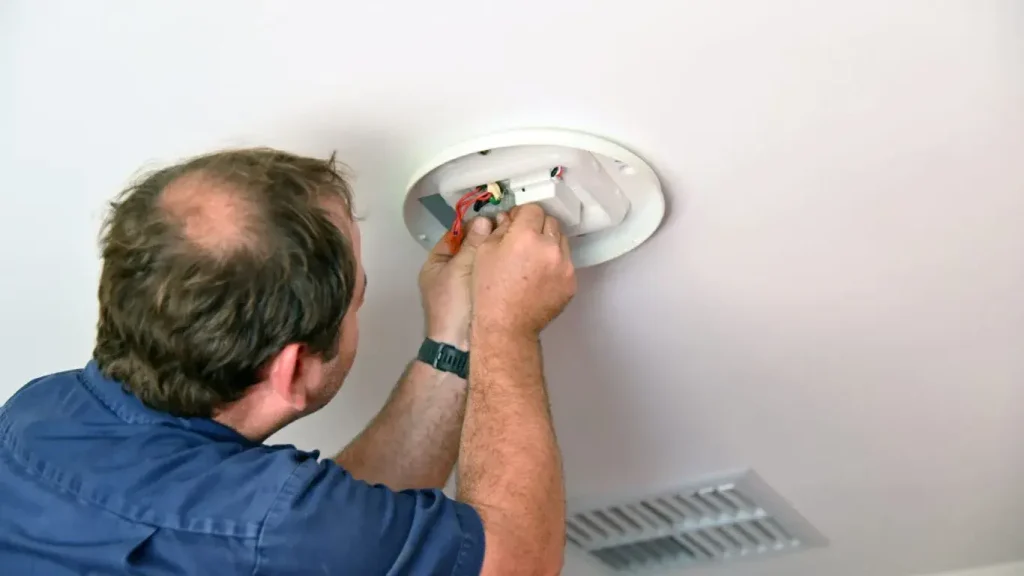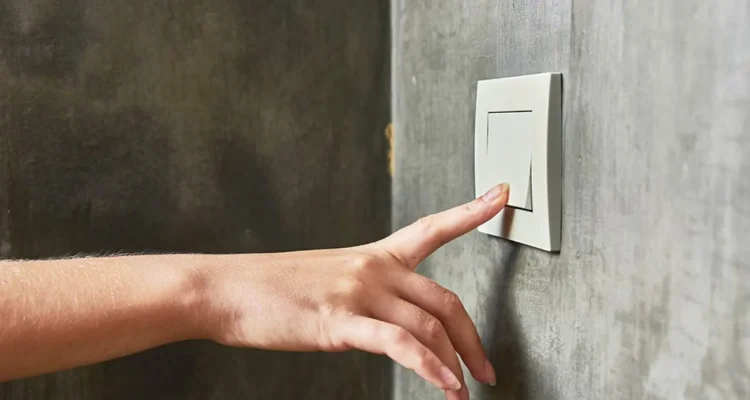Introduction
Have you ever flipped a light switch and felt a sudden, sharp shock? It’s not just an uncomfortable surprise — it could be a warning sign of electrical problems. Understanding why your light switch shocks you is crucial for both your safety and the safety of your home.
So, why does your light switch shock you? The answer can vary, but it usually boils down to a few key factors like faulty wiring, static electricity, or improper grounding. Let’s dive in to explore the reasons behind this electrical phenomenon and what you can do about it.

What Causes a Light Switch to Shock You?
Faulty Wiring
One of the most common reasons you might feel a shock when touching a light switch is faulty wiring. Over time, wires can deteriorate, get frayed, or come loose. These issues can lead to poor electrical connections, which, when you interact with the switch, might result in a shock.
Loose Connections
Loose connections inside the switch or in the wiring behind the wall can also be responsible. When electrical components aren’t properly connected, electricity can “leak” out and cause small shocks.
Static Electricity
In some cases, the shock you feel might be a result of static electricity, especially in dry conditions. While static shocks are harmless and not related to electrical wiring, they can still startle you and make you wonder if something is wrong.
The Role of Grounding in Light Switch Safety
How Grounding Prevents Shocks
Proper grounding is essential in preventing electrical shocks. Grounding provides a safe path for electricity to flow in case of an electrical fault. If your switch isn’t grounded properly, electricity might not flow where it’s supposed to, leading to shocks.
Signs Your Light Switch Isn’t Grounded Properly
If your light switch gives you frequent shocks, it could be a sign that the switch or the system isn’t properly grounded. Other indicators include flickering lights, buzzing noises, or burnt smells coming from the switch.
Different Types of Electrical Shocks
Mild Shocks (Static Electricity)
Sometimes, what feels like an electrical shock is actually just static electricity. This type of shock is more common in dry environments and when you’ve been moving around on carpeting or other surfaces that generate static.
Electrical Shocks (Caused by Faulty Wiring)
If the shock feels more intense or happens repeatedly, it’s likely due to an issue with your home’s electrical system. Faulty wiring or a malfunctioning switch can cause more serious electrical shocks, which could be dangerous.
How to Identify a Faulty Light Switch
Common Signs of a Faulty Switch
- Frequent shocks
- Flickering lights
- Buzzing or crackling sounds
- Burnt smells
- Switch feels hot to the touch
How to Test for Electrical Issues
You can use a voltage tester to check whether your light switch has any electrical problems. If you’re unsure about handling electrical equipment, it’s best to leave this task to a professional.
The Danger of Ignoring Electrical Shocks
Electrical Fires
Ignoring electrical shocks can lead to more severe problems, such as electrical fires. If faulty wiring or loose connections are causing the shocks, they could spark a fire if left unchecked.
Potential Injuries
Even mild shocks can cause injuries, especially if you have a heart condition or other health issues. Electrical shocks, regardless of their intensity, should always be taken seriously.
What to Do if Your Light Switch Shocks You
Safety Tips After Being Shocked
- Immediately stop using the switch.
- Turn off the power to that part of your house.
- Inspect the switch for visible damage.
- Contact a licensed electrician if you’re unsure of the cause.
When to Call an Electrician
If the shock is strong or happens repeatedly, it’s time to call a professional. Electrical work can be dangerous, and an expert can safely diagnose and fix the problem.
Preventing Light Switch Shocks
Regular Inspection
Inspect your switches and wiring regularly to catch any potential issues before they become dangerous.
Using Surge Protectors
Surge protectors can help prevent electrical overloads, which can lead to shocks. Make sure your home is equipped with surge protection devices.
DIY vs. Professional Electrical Work
Simple Fixes You Can Do Yourself
If the problem is a loose faceplate or a worn-out switch, replacing the switch is a job you can handle yourself — but only if you’re comfortable with basic electrical work.
Why Some Jobs Require a Licensed Electrician
More complex issues like faulty wiring or grounding problems should always be left to the professionals. Electrical work can be risky if not handled properly.
Electrical Safety Tips for Homeowners
Proper Maintenance of Electrical Systems
Regular maintenance is key to preventing electrical problems. Check your switches, outlets, and wiring for wear and tear.
Importance of Turning Off Power Before Repairs
Always turn off the power at the breaker box before attempting any repairs. This step is crucial for your safety.
How to Properly Replace a Light Switch
Step-by-Step Guide
- Turn off the power at the circuit breaker.
- Unscrew the faceplate.
- Disconnect the wires from the old switch.
- Attach the wires to the new switch.
- Screw the faceplate back on.
- Turn the power back on and test the switch.
Tools You’ll Need
- Screwdriver
- Voltage tester
- Wire stripper
- Electrical tape
Common Mistakes When Handling Light Switches
Failing to Cut Off Power
Never forget to cut off the power at the breaker box before working on any electrical switch.
Using the Wrong Tools
Using improper tools can cause accidents or damage. Always use the right tools, such as a voltage tester and wire stripper.
What to Expect When Hiring an Electrician
Costs of Fixing Electrical Shocks
The cost of hiring an electrician can vary based on the extent of the issue, but it’s worth it for the peace of mind and safety.
How Long the Process Takes
Most simple electrical repairs can be completed in a couple of hours, while more complex issues might take longer.
The Role of Modern Technology in Electrical Safety
Smart Switches and Safety Features
Modern smart switches come with advanced safety features, such as surge protection and overload prevention, reducing the risk of electrical shocks.
How Technology Reduces the Risk of Shocks
Innovations in electrical safety technology, like smart switches and GFCIs (Ground Fault Circuit Interrupters), can prevent electrical shocks and fires.
FAQs
Why do I only get shocked sometimes?
It might be due to static electricity, which is more common in dry conditions. However, if the shock occurs frequently, it could be a sign of faulty wiring.
Is it dangerous to get shocked by a light switch?
Yes, even mild shocks can indicate serious electrical problems that could lead to fires or more severe shocks.
How can I tell if my light switch is faulty?
Look for signs like flickering lights, buzzing noises, or a burnt smell. If in doubt, use a voltage tester or consult an electrician.
Should I always call an electrician after getting shocked?
If the shock is strong or occurs more than once, it’s a good idea to call an electrician to inspect the wiring and switch.
Can I fix a light switch shock problem myself?
You can replace a worn-out switch if you’re comfortable with basic electrical work, but leave complex wiring issues to the professionals.

Conclusion
If you’re experiencing shocks from your light switch, don’t ignore the problem. It could be a minor issue like static electricity, or it could indicate a more serious electrical hazard like faulty wiring or poor grounding. Prioritize your safety by addressing these issues promptly, whether by simple DIY fixes or by calling a professional electrician.


Congratulation!